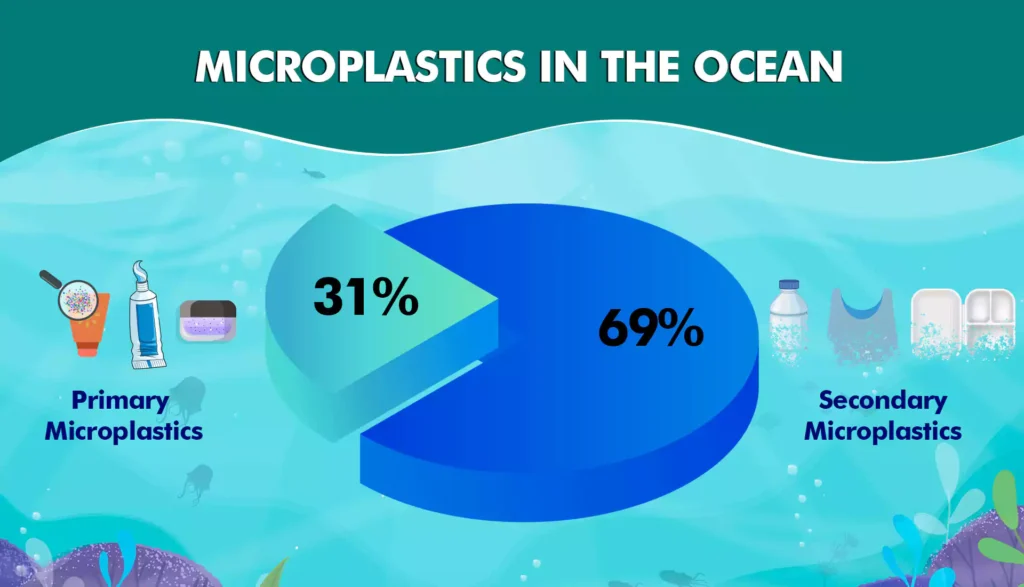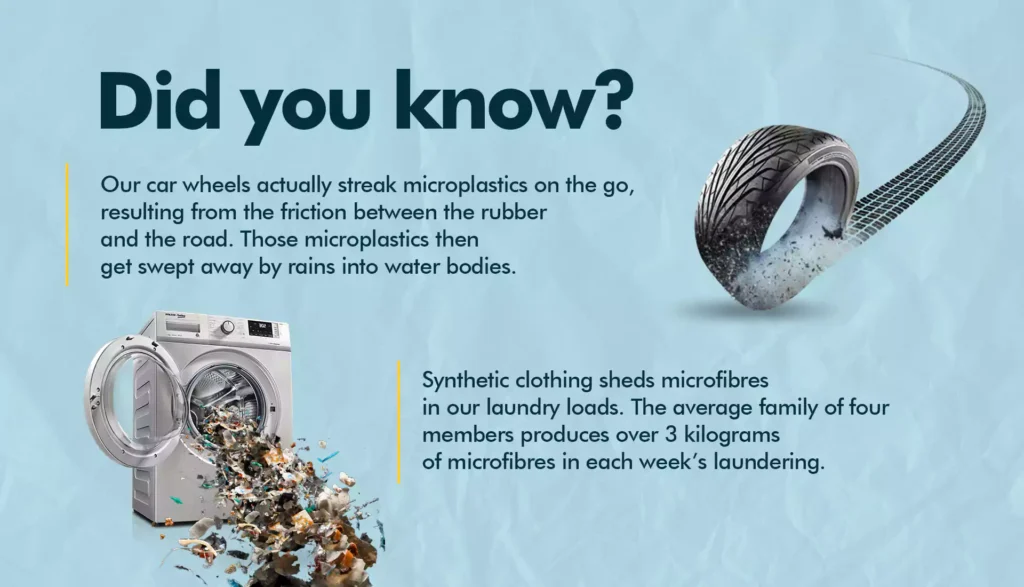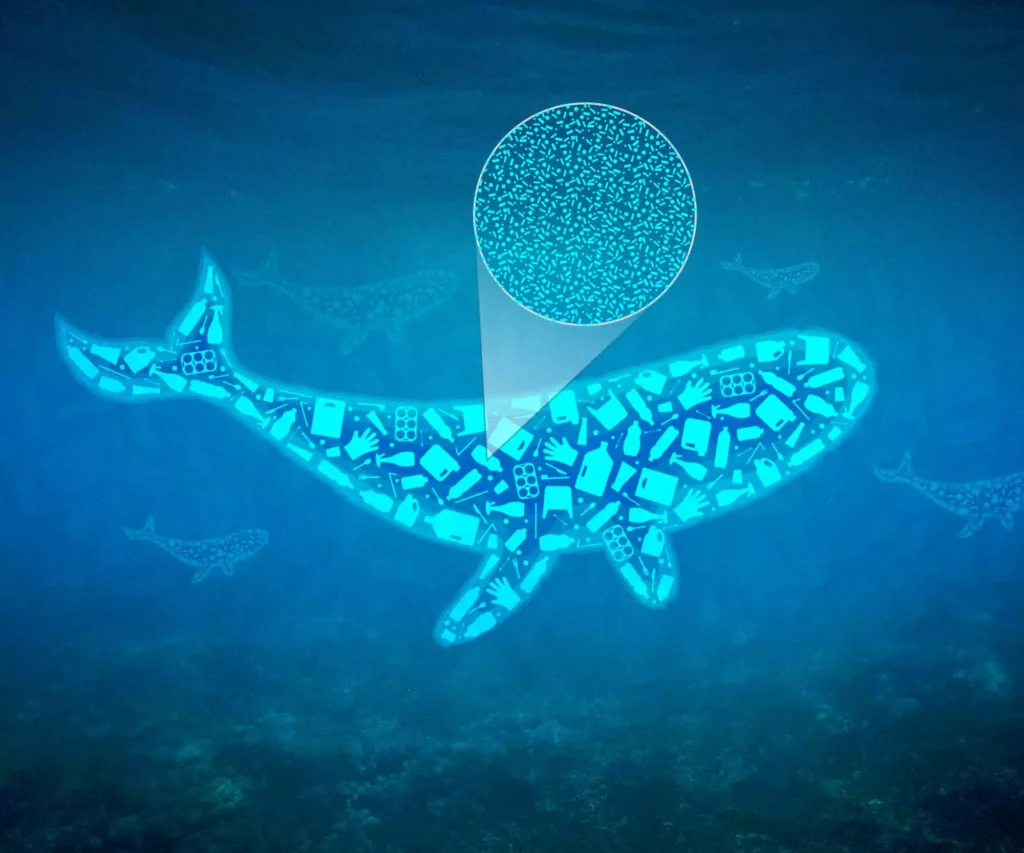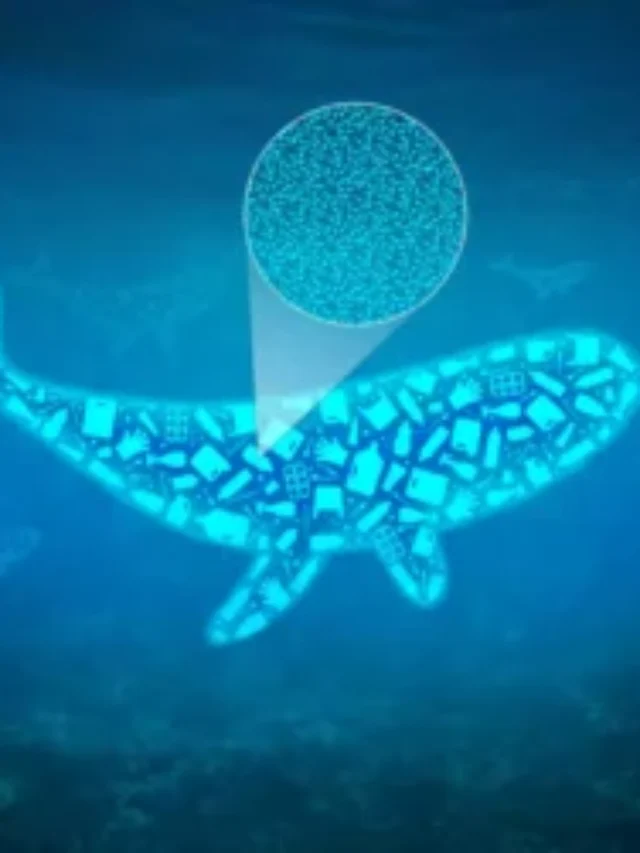Humans have a love-hate relationship with plastics. This synthetic material makes our lives incredibly convenient, and its use in medicine and technology can even be life-saving. However, plastics also choke our planet, squeezing the life out of every species in the ecosystem. Yet, despite this awareness, we have chosen to use more plastics instead of controlling our dependence on them. Now, those perils have mutated into newer, more challenging hazards but in “micro” size. Meet microplastics—tiny pieces of plastics less than 5 mm in length (the average grain of rice is 7 mm in size), causing even more problems.
Where do microplastics come from?
Microplastics come into our lives in two significant ways:
- Primary microplastics are intentionally manufactured materials, like the microbeads in exfoliating face washes, toothpaste and other cosmetic products, craft glitter, and the fine stuffing fibres used in plush toys.
- Secondary microplastics are formed when larger pieces of plastic get broken down. Mechanical forces like the wear and tear of repeated use, the sun’s heat, ocean waves, and wind waves convert plastics into smaller particles.
What’s the damage so far?
Until the nineties, humans treated the oceans as a global junkyard. So it did not come as a surprise when marine conservationists reported in 2022 that every square mile of our oceans contained 45,000 pieces of plastic. Just picture that for a moment; the expanse of it, the debris! In addition, over 20% of the ocean’s plastic waste is microplastics. Unfortunately, most microplastics are invisible to the naked eye, so they are challenging to account for and control.
Their small size and light weight grant them free movement through all mediums: water, land, and air. However, given the dense fluidity, they move the fastest in water. Thus, microplastics are in our food web, which implies it is in us. As small fish consume microplastics along with algae, they get passed along the chain until their on our dinner plates.

“So what? I can cut out seafood from my diet if I choose.”
It’s not that easy. While microplastics mainly dominate the waters, they are not uncommon elsewhere. Researchers have found them in drinking water, salt, honey, poultry, and beer, to name a few food sources.
Understandably, human tissue samples, blood samples, and waste samples now show the presence of microplastics. Moreover, doctors have identified them even within the womb, in babies and grownups alike.
If that didn’t make an impact, consider this: we currently ingest microplastics equivalent to the size of one credit card each week!
How can they harm us?
- Microplastics can cause tears on the walls of internal organs, which can cause bleeds (especially in infants) and leave our organs vulnerable to various infectious diseases.
- They can carry harmful bacteria and micro-parasites and spread diseases.
- They are known to piggyback on red blood cells, limiting the ability of RBCs to circulate oxygen to the body.
- Through chemical leaching, the toxic coating on the microplastics can get shed into the bloodstream. Some of these layers can even create cancer-causing compounds in our bodies.
- They can also break down into nanoplastics (basically great-grandchildren of plastics), less than 0.001 mm in size. Nanoplastics cause brain cancer, infertility, and hormonal imbalances.

Perhaps the most terrifying fact of them all is that scientists admit that there is so much more that is unknown about the effects of microplastics inside humans.
How do we get rid of microplastics?
We can’t. Realistically, we cannot entirely revoke our use of plastics per se. So while microplastics shake up the human world, we can do little to erase them permanently. However, we can attempt to catch the microplastics before they go into the drains in our homes, all the way into oceans. Better yet, we can watch all our future purchases closely for any synthetic composition and make more informed choices, as shown below.
Labels tell all:
Read the labels printed on the fabric of your clothes, bed linen, and any other textiles you buy. Organic cotton, linen, hemp, and pure silk are plastic-free, unlike rayon, nylon, and polyester options.
A greener playroom:
Practise the same alertness with your child’s plushies and crafting supplies. Today’s market offers a wide organic selection that can replace acrylic paint, polymer clays, and slime.
Glam responsibly:
All our makeup products, such as lip gloss, powder-based palettes, mascara, and nail polish, consist of microplastics. With continued use, they can cause micro-abrasions on the skin (especially during makeup removal). Switch these out for zero-waste brands that go easy on the oceans and your skin.
Save the ocean from home:
Use the finest filters in your washing machines to sieve all the plastic microfibres in your laundry. Then, clear out the filter into your plastic disposal system, or store it separately until you can pass it on to your waste handlers.
Rug regulation:
Vacuum carpeted areas as often as possible, especially over area rugs and doormats, as microfibres come loose from them with use.
Yes, microplastics pose quite an ordeal for the environment and us. Fortunately, we’ve come to identify the problem early enough. With a little determination and a lot of awareness, we can actually beat these tiny troublemakers and keep them from threatening our ecosystem.


